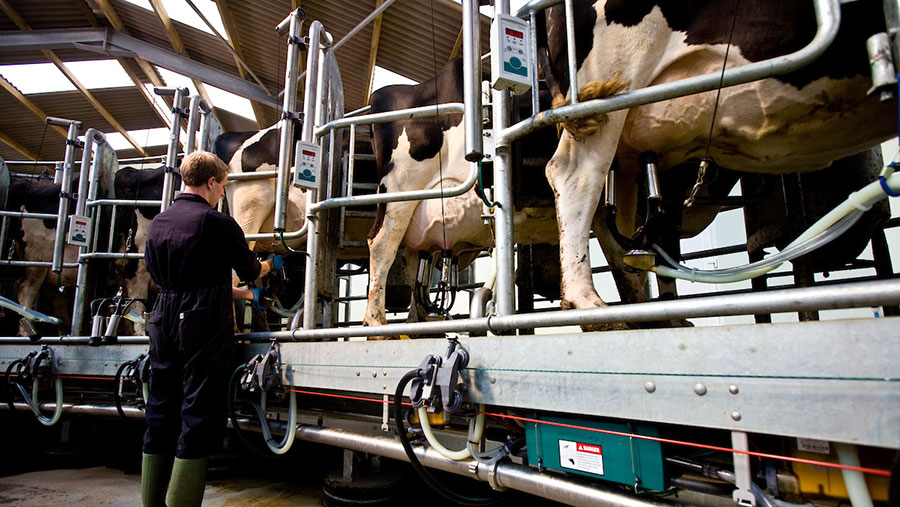Mounting milk losses raise fears of UK dairy exodus
 © Tim Scrivener
© Tim Scrivener Continued milk price cuts by processors are pushing more and more dairy farmers into the red, raising fears that many will cut production further, or quit the sector altogether.
Farmgate prices paid by some dairy processors have fallen by more than 30% in the past six months, with many farmers now receiving about 35p/litre – almost 10p/litre below the typical full cost of production.
In the past year alone, the number of dairy farmers in Great Britain has fallen by 4.8%, with just 7,500 left in April 2023, according to recent AHDB figures.
See also: Elon Musk weighs in on Irish dairy cull proposal
Scottish dairy farmer and NFU Scotland dairy policy manager Tracey Roan said the milk prices being paid to farmers have been plummeting, with some as low as 33p/litre, while costs of production are estimated at 43.5p/litre.
“Although inputs have started to come down, such as the cost of feed, fuel and fertilisers, it’s still a race to the bottom when it comes to milk price,” said Ms Roan, “It’s the same across the UK, we are all feeling it”
Combined with strong beef and cull cow prices, there was little incentive for farmers to try to increase milk output, she added, and any unfavourable weather events – such as a summer drought – will likely reduce it further.
NFU dairy board chairman Michael Oakes agreed that dairy farmers are feeling the pain, with many questioning whether they will still be milking cows in 12 months’ time.
“There are things coming down the line from the government on the environment that will add costs to businesses, and people will have to invest. It’s really knocking people’s confidence.”
Mr Oakes added that the Basic Payment Scheme was still there, but this safety net was being removed quite quickly.
Cull cows
Auctioneers have confirmed that low milk prices and high cull cow values are encouraging more dairy cows to be sold.
Holstein-Friesian-cross cows aged more than 36 months averaged £1,625 at UK auction markets for the week ending 27 May, up by £223 a cow on the same week last year.
Mark Bromell, director and auctioneer at Kivells in the South West, said he was seeing more herd dispersal sales and definitely increased numbers of dairy cows beginning to come forward.
“The trade has been very resilient to the milk price drop, with the cull cow trade so good that a lot of people are shipping cows out,” he said.
David Megahy, head of cattle at St Boswells Mart in the Scottish Borders, suggested that the weather will also be a factor in encouraging more dairy cows to be sold.
“Five years ago, when first-cut silage was poor and farmers couldn’t get second cut made, a lot of dairy cows came forward to the food chain due to worries about the fodder situation,” he said.
